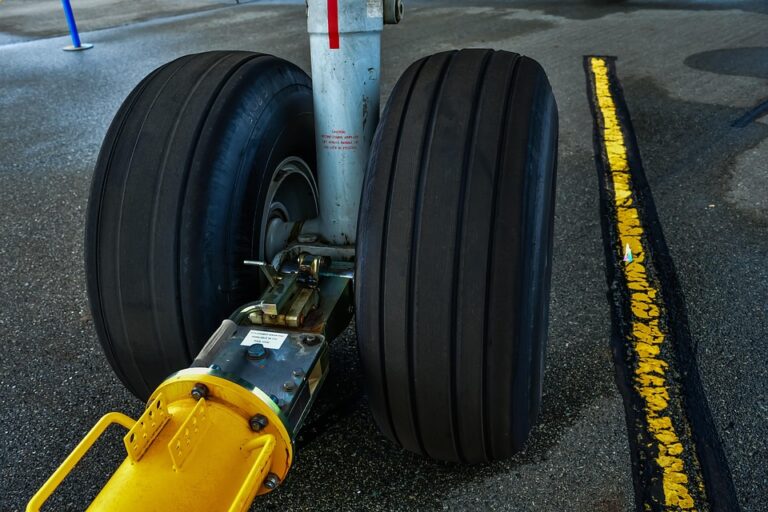Tire Maintenance Myths: What Every Driver Should Know
Meta Description: Discover the truth behind common tire maintenance myths. Learn essential tips for caring for your tires to ensure safety and longevity on the road.
Tires are the unsung heroes of our vehicles, yet they often receive less attention than they deserve. Proper tire maintenance is crucial for safety, performance, and fuel efficiency. Unfortunately, a host of myths surrounding tire care can lead drivers to neglect essential practices that keep their tires and vehicles in optimal condition. In this article, we’ll debunk common tire maintenance myths and provide actionable advice for every driver.
Myth 1: Tire Pressure Doesn’t Affect Fuel Efficiency
One of the most persistent myths in tire maintenance is the belief that tire pressure doesn’t significantly impact fuel efficiency. In reality, under-inflated tires can decrease fuel economy by up to 3%. Low tire pressure causes increased rolling resistance, forcing your engine to work harder and consume more fuel.
Actionable Tip:
Check your tire pressure at least once a month and before long trips. Use the manufacturer-recommended pressure found on the driver’s side door jamb.
Myth 2: All Tires are Created Equal
Many drivers assume that switching from one brand of tires to another won’t make much difference. However, tires can vary significantly in quality, tread pattern, and composition, which affects handling, traction, and durability.
Real-World Example:
When it comes to winter conditions, special winter tires outperform all-season tires due to their unique tread designs and rubber compounds. Ignoring the difference can lead to dangerous driving situations.
Actionable Tip:
Consult a professional to determine which tires are best suited for your driving conditions and lifestyle.
Myth 3: You Only Need to Rotate Your Tires When You See Uneven Wear
Another common misconception is that tire rotation is only necessary when uneven wear is visible. While uneven wear is a sign that rotation may be needed, regular rotation—typically every 5,000 to 8,000 miles—ensures even wear over time and enhances tire longevity.
Actionable Tip:
Adopt a routine tire rotation schedule according to your vehicle’s owner’s manual. Regular maintenance can save you money in the long run.
Myth 4: Tire Wear is Only About Tread Depth
Tread depth is crucial for tire safety, but many drivers overlook other means of wear. Sidewall damage, bulges, and cracks can compromise tire integrity without affecting tread depth. Therefore, it’s vital to inspect your tires regularly for various signs of wear.
Actionable Tips:
- Look for cracks or blisters on the tire’s sidewall.
- Examine tires for bulges, particularly if you hit a pothole.
- Check for foreign objects embedded in the tire.
Myth 5: Mixing Tire Types is Acceptable
Some drivers believe that it’s acceptable to mix and match different types or brands of tires. While it may not seem problematic, doing so can negatively impact vehicle handling, control, and stability.
Real-World Example:
Mixing off-road tires with performance tires can lead to uneven traction in different driving conditions. This inconsistency can be particularly hazardous during adverse weather.
Actionable Tip:
Always use the same type and brand of tires across all positions, preferably replacing all four at once for optimal performance.
Maintaining Your Tires: Key Factors to Consider
Now that we’ve debunked some tire maintenance myths, let’s look at essential maintenance tips every driver should adopt for longevity and safety:
1. Regularly Inspect Your Tires
Conduct visual inspections for signs of wear, damage, or punctures. Keep an eye on the tread depth; a simple penny test can help determine if your tires need replacing. Insert a penny into the tread with Lincoln’s head down. If you can see all of Lincoln’s head, it’s time for new tires.
2. Maintain Proper Alignment and Balancing
Poor alignment can cause uneven tire wear and affect handling. If your vehicle pulls to one side or if you notice vibrations, it’s time to have your alignment checked by a professional.
3. Use Seasonal Tires When Necessary
If you live in an area with extreme seasonal conditions, consider investing in dedicated winter or summer tires. The right tires for your climate can significantly enhance safety and performance.
4. Follow Your Vehicle’s Maintenance Schedule
Regularly check your vehicle’s owner’s manual for tire maintenance recommendations. Every vehicle is different, and following specific guidelines can contribute to tire life.
Conclusion: Upgrade Your Tire Maintenance Knowledge
Understanding the truths about tire maintenance can make a significant difference in safety and vehicle performance. By debunking these common myths, you empower yourself with the knowledge needed to make informed decisions about your tires. Always prioritize regular inspections, proper inflation, and maintenance to ensure a safer driving experience.
Now that you’re equipped with accurate information about tire maintenance, take charge of your vehicle’s health. Share this article with fellow drivers to promote safer roads for everyone!
For more insights on automotive care, visit buzzolive.com and stay informed on the best practices for maintaining your vehicle.


